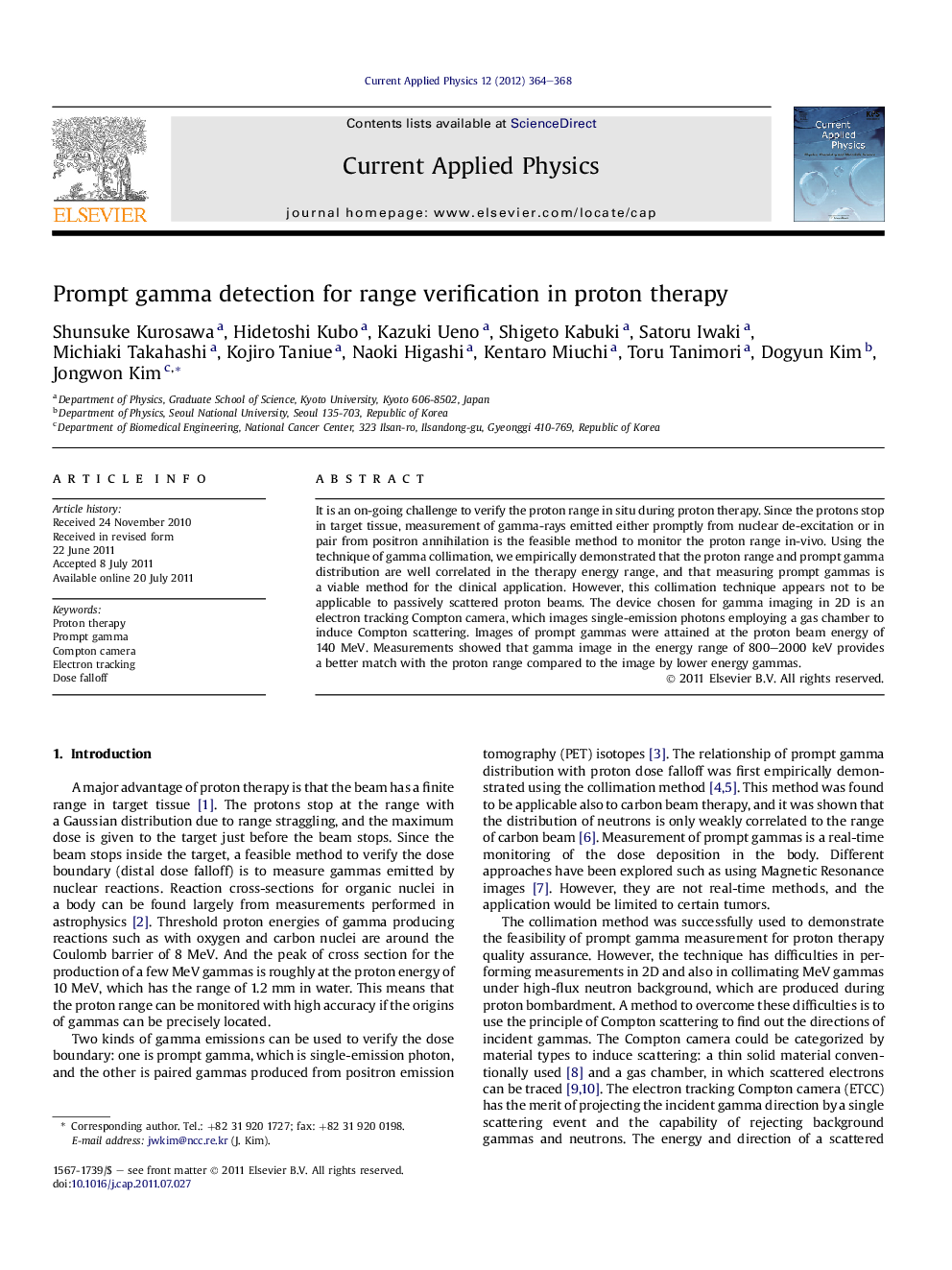| Article ID | Journal | Published Year | Pages | File Type |
|---|---|---|---|---|
| 1787056 | Current Applied Physics | 2012 | 5 Pages |
It is an on-going challenge to verify the proton range in situ during proton therapy. Since the protons stop in target tissue, measurement of gamma-rays emitted either promptly from nuclear de-excitation or in pair from positron annihilation is the feasible method to monitor the proton range in-vivo. Using the technique of gamma collimation, we empirically demonstrated that the proton range and prompt gamma distribution are well correlated in the therapy energy range, and that measuring prompt gammas is a viable method for the clinical application. However, this collimation technique appears not to be applicable to passively scattered proton beams. The device chosen for gamma imaging in 2D is an electron tracking Compton camera, which images single-emission photons employing a gas chamber to induce Compton scattering. Images of prompt gammas were attained at the proton beam energy of 140 MeV. Measurements showed that gamma image in the energy range of 800–2000 keV provides a better match with the proton range compared to the image by lower energy gammas.
► The prompt gamma measurement is a viable modality to monitor the proton dose range. ► Collimator was used to show correlation between gamma and proton dose distributions. ► Collimation method may not be used for passively scattered proton beams. ► Electron tracking Compton camera can be a practical device for imaging gammas in 2D. ► An optimal gamma energy range for imaging could be found for a given Compton camera.
